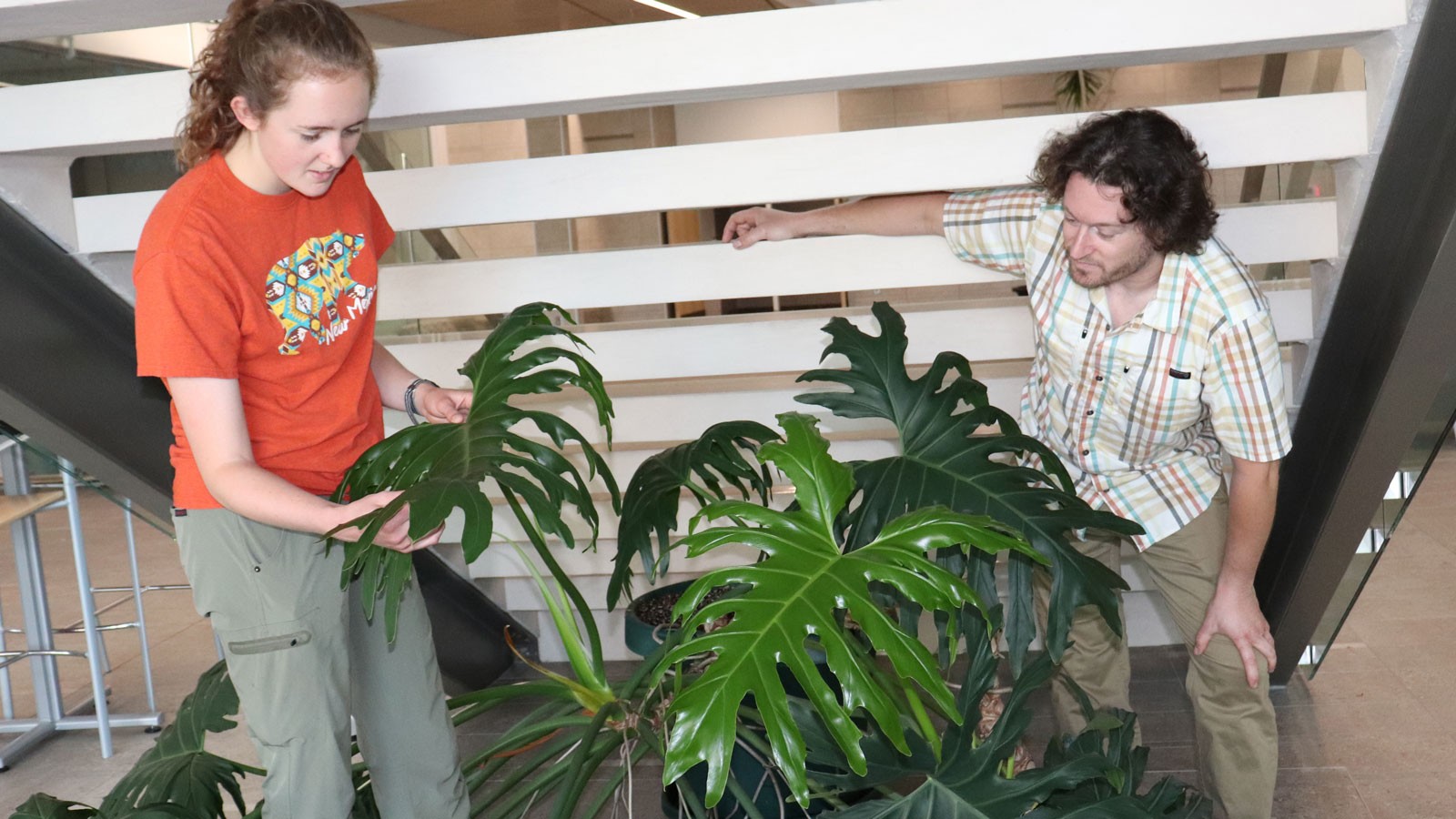Undergrad Researchers Among Aggies Presenting at 2023 Ecological Society of America Meeting
Anna Billings, Mikayla Ballard, with mentor Jerry Schneider from USU's Beckman Lab, present findings from Panamanian study site.
By Mary-Ann Muffoletto |
From left, Anna Billings and Mikayla Ballard, NSF REU scholars in the USU Beckman Lab, collect roots from a tropical shrub on Panama's Barro Colorado Island. The undergrads present at the 2023 Ecological Society of America annual meeting Aug. 6-11.
Scholars Anna Billings and Mikayla Ballard, participants in National Science Foundation-funded Research Experiences for Undergraduates opportunities with Utah State University ecologist Noelle Beckman, present their findings from a data collection trip to Panama and months of lab analysis at the 2023 Ecological Society of America Annual Meeting, Aug. 6-11, in Portland, Oregon.
“Participating in an REU in Dr. Beckman’s lab has definitely been worthwhile and a great opportunity to do research,” says Billings, a USU Honors scholar who is pursuing a dual major in biology — ecology and evolution emphasis — and music.
With Ballard, a student at Chicago’s Loyola University, Billings presents the research poster, “The Roots (and Leaves, and Seeds) of Chemical Defense Variation: Secondary Metabolite Allocation Across Above-Belowground Axes and Across Species in 10 Sympatric Psychotria" at the ESA meeting.
The poster details analysis the undergrads conducted of secondary metabolites they collected from tropical shrubs during a 10-week trip to Panama’s Barro Colorado Island in summer 2022. Site of the century-old Smithsonian Tropical Research Institute, the island is situated in the man-made Gatun Lake in the middle of the Panama Canal. It’s one of the most intensely studied tropical forest systems in the world.
“It was really cool to live on a research island with dorms, labs and a cafeteria in a tropical rain forest, meet researchers from around the world, and observe their research,” Billings says. “The island has a crazy diversity of plants, insects and animals.”
The students’ research topic — secondary metabolites — are compounds produced by plants that are not essential for their growth and reproduction, says Beckman, associate professor in USU’s Department of Biology and the USU Ecology Center. “We’re exploring the evolutionary mechanisms that maintain the enormous diversity of these compounds, and how they may mediate interactions between the plants that produce them and animals that feed on the plants.”
Schneider accompanied the scholars to Panama and guided the students through their REU project, which is part of a larger, NSF-funded project Beckman leads with collaborators from Loyola and Virginia Tech. The researchers are studying varied plant and animal interactions to provide insight into the evolution of the high diversity of chemical compounds found in plants of the rain forest.
Schneider is also presenting his work with Beckman at the 2023 ESA meeting, with a poster titled “Different Tools for Different Trades: Contrasts in Diversity and Phylogenetic Conservatism of Secondary Metabolites in Fruit and Leaves of Psychotria (Rubiacae).”
A relative of cultivated coffee, Psychotria is a genus of flowering plants containing more than 1,500 species, including more than 200 species in Panama — subjects of this study — Schneider says. Birds eat the plant’s berries, carrying viable plant seeds in their digestive tracts, which are deposited far and wide.
“Psychotria’s fleshy fruit tissue must remain attractive to the seed-dispersing animals, while, at the same time, defending itself against frugivores that don’t disperse seeds,” he says. “We think the plant’s secondary metabolites play a role in these plant-animal interactions, but we’re not sure which ones. We’re studying these compounds at the chemical level to find out.”
Schneider and Beckman expect to find more diversity of secondary metabolites in the plant’s fruits than in the leaves. They suspect this phenomenon is linked to diverse evolutionary pressures from plant pathogens and insect seed predators that promote fruit defense, as well as from seed dispersers that promote the attractiveness of the fruit for consumption.
“Our efforts represent the most integrative study to date of the chemical ecology of seed dispersal and fruit defense,” Beckman says.
USU ecologists Anna Billings and Jerry Schneider examine a philodendron, similar to plants they encountered in Panama, in the Life Sciences Building. The researchers are among Aggies presenting at the 2023 Ecological Sciences of America Meeting.
WRITER
Mary-Ann Muffoletto
Public Relations Specialist
College of Science
435-797-3517
maryann.muffoletto@usu.edu
CONTACT
Noelle Beckman
Associate Professor
Department of Biology and USU Ecology Center
435-797-4115
noelle.beckman@usu.edu
TOPICS
Research 879stories Ecology 173stories Undergraduate Research 157storiesComments and questions regarding this article may be directed to the contact person listed on this page.









